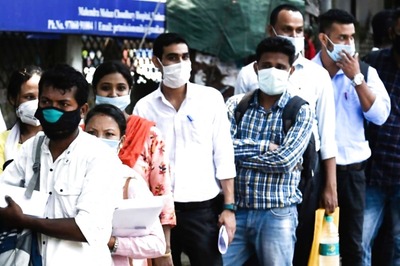
views
Mumbai: Don't look for an Indian 'Avatar' anytime soon, but Bollywood, inspired by the success of blockbusters such as 'Transformers', is starting to take special effects seriously.
Up until five years ago, producers were unwilling to embrace technology, preferring instead to spend millions on expensive outdoor shoots and sets.
That changed when India became a viable back-end destination for Hollywood films like 'Tron' and 'Avatar' amid a growing wave of outsourcing post-production special effects due to cost. The number of studios handling VFX - visual effects that include mixes of live-action footage and computer-generated images - mushroomed.
"Earlier, Bollywood looked at technology like VFX as a cost-saving mechanism, but now it is also about the experience of watching a film with that kind of technology," said Kamal Jain, chief financial officer at Eros International.
Eros will release Ra One, an ambitious superhero film with star Shah Rukh Khan, later this year. The company is also making Rana, a tri-lingual epic with another superstar, Rajnikanth.
Rajnikanth's last film, Robot, had the flashiest Bollywood special effects to date, including a Matrix-like sequence, and such superstar backing of the trend means others are sure to follow.
Zindagi Na Milegi Dobaara o, which releases next week, has used VFX to recreate a sky-diving scene and a race between a car and a horse.
Another film, Urumi or Curling Blade, which depicts the arrival of explorer Vasco Da Gama in Kerala, used special effects to re-create Portugal in the 14th century.
Both films were processed at Reliance MediaWorks, part of the Anil Ambani ADAG group, which has a sprawling studio in a distant suburb of Mumbai. The studio, which earlier worked on back-end VFX for Hollywood, added a separate team to cater to the growing demands from Bollywood.
Starting from eleven in 2008, the studio has now grown to 51 and is constantly on the lookout for more talent.
"Revenue from VFX for Bollywood has doubled every year and we continue to see it growing," Neil Cunningham, Creative Head at the RMW digital lab, told Reuters.
BOOMING BUSINESS BUT NO BUDGET
The Indian animation and VFX industry is expected to grow at a compound annual rate of 19 per cent, reaching 55.9 billion rupees by 2015, said consultancy KPMG.
But that business isn't translating into Indian 'X-Men', because budgets aren't on a par with those in the West.
"The kind of budgets that a movie like 'Avatar' needed were justified because the appetite for that kind of a film is huge. But Indian producers can't spend as much, because the audience isn't as huge," said Rajiv Raghunathan, RMW production head.
In addition, Indian audiences -- brought up on film staples of family dramas and corny romances -- have only recently started adapting their palates to VFX-heavy films.
Rajnikanth's "Robot" was India's most expensive film to date, with an estimated cost of $33.3 million. It earned more than $83 million, making it one of the biggest hits ever.
"Indian producers don't need to spend as much on special effects, because we have studios here who will give you the same quality for a lesser price," says Jain at Eros, whose company was one of the first to set up a VFX studio in India.
That studio, EyeQube, has handled special effects for Hollywood and also for in-house productions in Eros, and recently opened a London office.
"It wasn't always this easy. When we set out to make a VFX heavy film in 2005, the technology wasn't accessible, and people were very suspicious of it," says Bollywood producer Harry Baweja, whose futuristic film "Love Story 2050" was one of the first films to use special effects.
The film bombed in 2008, and Baweja says he knows of producers who were planning similar films, but shelved them.
But he said things were poised to change.
"Bollywood is well-known for its herd mentality. If one film like Ra.One does well, you can be sure there will be producers lining up outside VFX studios, hoping to replicate its success."




















Comments
0 comment